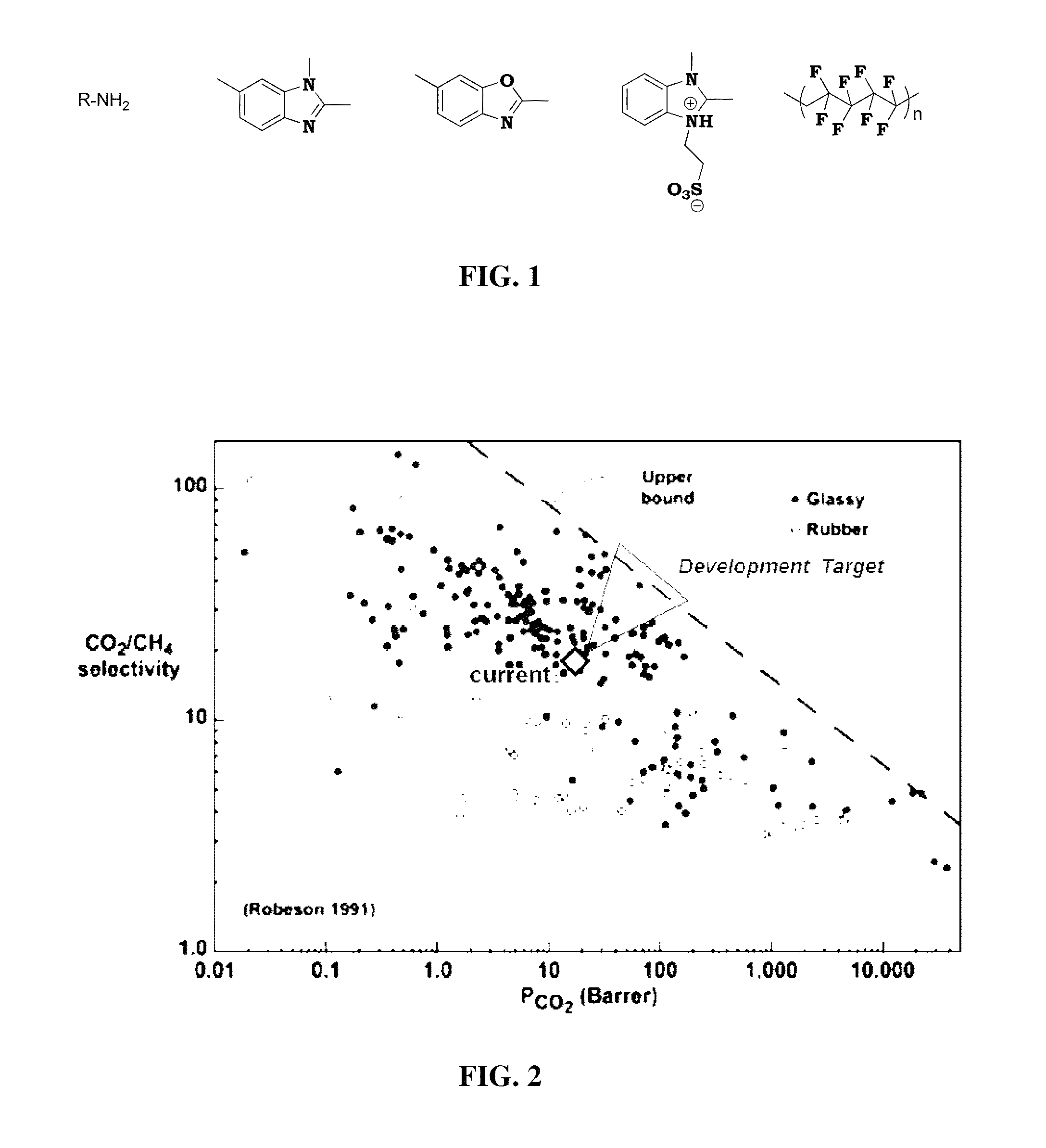Polymer nanocomposites for gas separation
- Summary
- Abstract
- Description
- Claims
- Application Information
AI Technical Summary
Benefits of technology
Problems solved by technology
Method used
Image
Examples
Embodiment Construction
[0018]The present invention relates to a polymer nanocomposite for gas separation. The polymer nanocomposite can be useful for many different types of gas separations that involve separating a target gas from a second gas in a gas mixture. For example, in certain embodiments the target gas is carbon dioxide and the second gas is one or more hydrocarbons present in natural gas. Alternatively, the polymer nanocomposite may be useful for separation of carbon dioxide from hydrogen or nitrogen, separation of oxygen from nitrogen, separation of helium from nitrogen or methane, or other gas separations.
[0019]The polymer nanocomposite comprises a matrix formed from a modified polymer and nanoparticles incorporated in the matrix. The modified polymer includes a polymer that is modified with functional groups as described below. The polymer before modification is referred to herein as the “base polymer”. The base polymer has a selectivity for the target gas over the second gas; in other words...
PUM
| Property | Measurement | Unit |
|---|---|---|
| Fraction | aaaaa | aaaaa |
| Fraction | aaaaa | aaaaa |
| Thickness | aaaaa | aaaaa |
Abstract
Description
Claims
Application Information
 Login to View More
Login to View More - R&D
- Intellectual Property
- Life Sciences
- Materials
- Tech Scout
- Unparalleled Data Quality
- Higher Quality Content
- 60% Fewer Hallucinations
Browse by: Latest US Patents, China's latest patents, Technical Efficacy Thesaurus, Application Domain, Technology Topic, Popular Technical Reports.
© 2025 PatSnap. All rights reserved.Legal|Privacy policy|Modern Slavery Act Transparency Statement|Sitemap|About US| Contact US: help@patsnap.com


